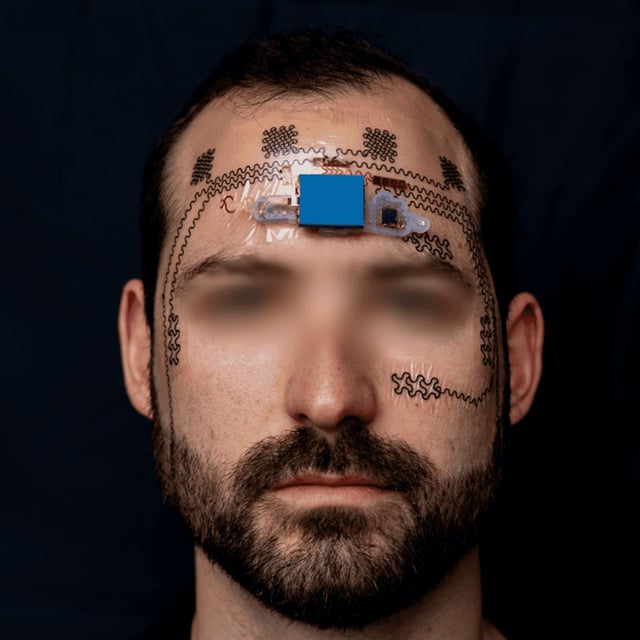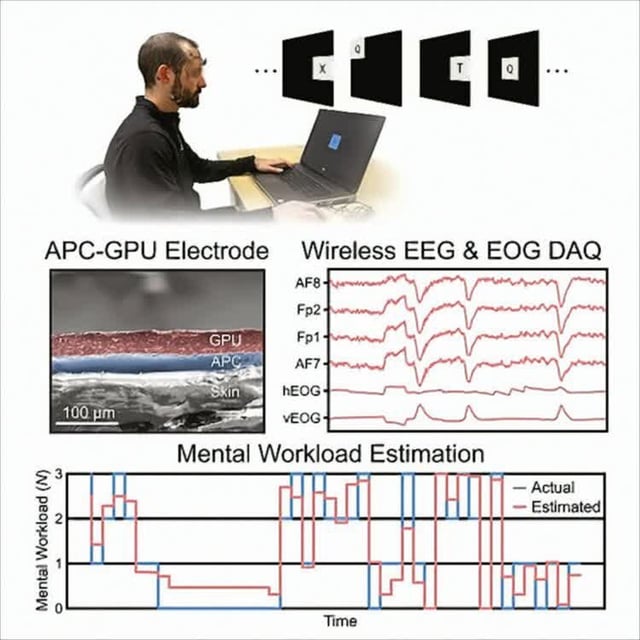Overview
- The temporary electronic tattoo uses ultrathin sensors to record four EEG channels on the forehead and two EOG channels around the eyes for real-time monitoring of brainwave patterns.
- In tests with six volunteers performing memory tasks, the e-tattoo detected rises in theta and delta activity and drops in alpha and beta waves, and a machine-learning model successfully predicted approaching mental strain.
- Total hardware costs are about $200 for reusable chips and battery plus roughly $20 per disposable sensor, offering a low-cost alternative to conventional EEG setups.
- Researchers envision the technology aiding focus-critical roles—such as air traffic controllers, truck drivers, healthcare workers and military personnel—to warn users before cognitive overload.
- Next steps include developing ink-based sensors for use on hairy skin and conducting broader trials to confirm the e-tattoo’s effectiveness outside laboratory conditions.


